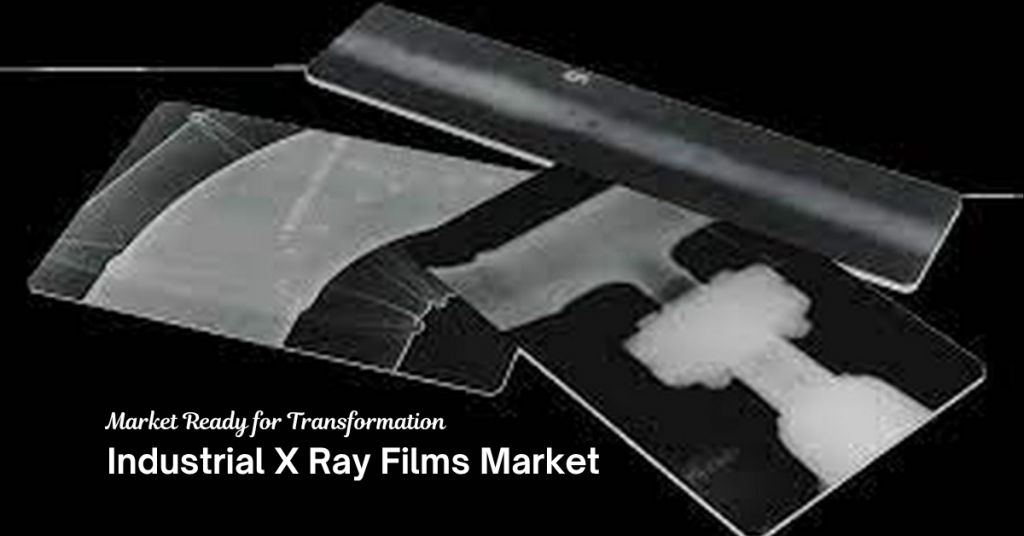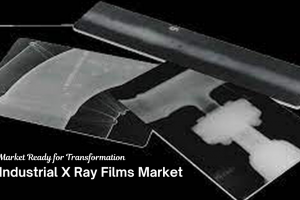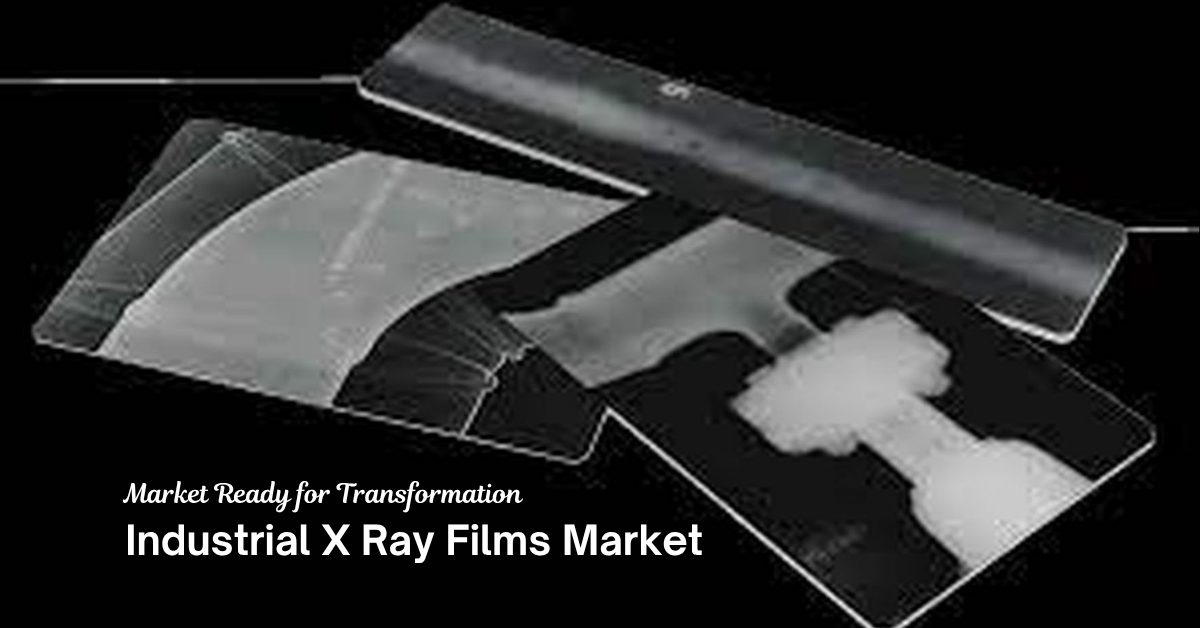
Market Overview
The Industrial X Ray Films Market was valued at USD 2060 million in 2024 and is expected to reach USD 2865.1 million by 2032, expanding at a CAGR of 4.21% during the forecast period. This moderate but consistent growth is underpinned by increasing applications of non-destructive testing (NDT) methods across critical industries such as aerospace, automotive, energy, and manufacturing.
Industrial X ray films are integral components of quality assurance and defect detection systems. These films provide high-resolution imaging that is essential for identifying structural integrity issues in mechanical and infrastructural components. Their use in safety-critical industries, where precision is paramount, underscores the increasing relevance of this market on a global scale.
As global regulations demand stricter inspection protocols, industries are increasingly turning toward NDT solutions for reliability. Moreover, the rising complexity of manufactured components, particularly in aerospace and energy sectors, has heightened the need for precise imaging techniques. While digital X-ray systems are gaining momentum, traditional film-based solutions continue to be in demand due to their affordability, image clarity, and long-term storage capabilities.
Furthermore, emerging economies are showing an increased adoption of industrial X ray films, supported by growing infrastructure investments and increased awareness of quality standards. While developed markets continue to upgrade their NDT frameworks, developing nations are still heavily reliant on film-based technologies, which sustains global demand.
Read full report: https://www.credenceresearch.com/report/industrial-x-ray-films-market
Market Drivers
Expanding Use in Aerospace and Automotive Industries
The aerospace and automotive industries rely heavily on precision-based quality inspection systems. Industrial X ray films offer unparalleled image resolution that supports structural defect detection in engine components, airframes, and critical joints. As safety regulations tighten and vehicle complexity increases, manufacturers are boosting their reliance on reliable NDT solutions, fueling demand for X ray films. These industries also demand consistent inspection accuracy under variable environmental conditions, which film-based systems can provide. Furthermore, maintenance cycles in aviation require repeated inspections, thereby increasing recurring demand. Suppliers are also investing in R&D to develop higher-grade films that can perform under extreme heat and stress. The emergence of electric vehicles has introduced new safety standards, further broadening X-ray film applications. These dynamics collectively solidify the market position of X ray films in mobility sectors.
Regulatory Push for Non-Destructive Testing (NDT)
Several countries are imposing stricter compliance guidelines concerning the quality control of heavy industrial equipment. This includes mandatory use of NDT methods in sectors such as oil & gas, power generation, and construction. As industrial X ray films form the backbone of many NDT processes, these regulatory changes have significantly accelerated market adoption. ISO standards and country-specific safety laws require routine inspection with high-resolution tools, positioning X ray films as an essential compliance tool. Government contracts in nuclear and defense sectors often stipulate traditional NDT methods that utilize film-based techniques. Public safety initiatives in bridges, tunnels, and railways are also driving inspection requirements. Additionally, regulatory bodies are mandating documentation and archival of test results, a function X ray films fulfill well. This regulatory environment supports steady demand and industry standardization.
Cost-Effectiveness and Long-Term Usability
Despite the growing adoption of digital radiography, industrial X ray films remain a cost-effective solution for many industries, especially in small and medium enterprises. Their low cost, reliable performance, and extended archival capabilities make them a viable option, especially in regions with limited digital infrastructure. Unlike digital systems, film processing equipment involves lower capital expenditure and maintenance. Developing countries with limited budgets benefit significantly from film systems that require minimal technical training. In sectors with high inspection volume, the consistent pricing of films allows predictable budgeting. Moreover, the durability of physical film records provides a sense of reliability for long-term storage. These advantages make industrial films particularly attractive for companies with limited access to cloud-based or digital infrastructure.
Growth in Infrastructure and Construction Projects
Large-scale construction activities across developing economies have prompted the use of inspection tools to verify the integrity of steel structures and concrete frameworks. Industrial X ray films are used to detect welding faults and hidden defects in construction materials, increasing their relevance in infrastructure projects worldwide. Countries like India, Indonesia, and Vietnam are investing heavily in bridges, highways, and public buildings. Contractors rely on film-based NDT methods for routine checks and project certifications. Government-funded construction projects often follow established protocols that include traditional radiographic testing. Additionally, the adaptability of X ray films in different field environments enhances their usability. As urbanization accelerates in emerging economies, so too will the need for dependable inspection systems like X ray films.
Market Challenges
Rising Shift Toward Digital Radiography
The advent of digital imaging systems has started replacing traditional X ray films. Digital methods offer faster processing times and instant results, posing a serious challenge to the continued use of film-based systems. They also allow remote access and easy data sharing, which modern industries are increasingly prioritizing. Automated defect recognition algorithms further enhance the efficiency of digital systems, diminishing the value proposition of traditional films. With prices of digital radiography hardware gradually falling, the entry barriers are also lowering. Moreover, as new professionals enter the workforce with digital-first training, their preference tends to lean toward digital interfaces, causing further migration.
Environmental and Disposal Concerns
X ray films contain silver halide and other chemicals that require proper disposal. Stringent environmental norms and the cost of waste management are adding pressure to film manufacturers and users alike. Governments are introducing stricter recycling mandates, increasing the operational burden for end-users. There is also growing public scrutiny over chemical waste disposal from industrial operations. Improper disposal of used films could attract fines and damage corporate reputations. Film processors must invest in environmentally compliant infrastructure, which adds to cost. These challenges are pushing companies to reconsider long-term film usage strategies.
High Operational Costs in Developed Economies
In developed countries, labor costs associated with manual processing, film storage, and inspection can outweigh the benefits, pushing companies to transition to digital alternatives, which reduces the demand for conventional films. Space limitations in modern manufacturing facilities also discourage large physical archives. The upkeep of darkrooms and chemical replenishment is another overhead that digital systems avoid. Additionally, the cost of compliance with environmental laws regarding film processing and disposal can be high. Over time, these accumulated costs make the shift to digital systems more financially viable for larger enterprises. Consequently, market growth in developed regions faces stagnation.
Limited Upgradability and Integration
Industrial X ray films lack the flexibility to integrate with digital platforms and data analytics tools. This limitation hampers their adaptability in smart manufacturing environments where real-time data access is crucial. Industry 4.0 frameworks emphasize system integration, which films inherently do not support. The inability to automate film processing leads to higher manual labor dependency. This disconnection from broader enterprise systems creates operational inefficiencies. As more factories adopt digital twins and AI-based inspection, films risk becoming obsolete. This technological gap restricts their utility in future-ready infrastructures.
Market Opportunity
Demand from Emerging Markets
Emerging countries in Asia Pacific, Latin America, and Africa continue to adopt film-based systems due to lower initial costs and limited digital infrastructure. This opens a significant market for affordable industrial X ray films. Local manufacturers in these regions are still reliant on legacy inspection systems. Government investments in railways, bridges, and energy sectors in these regions demand scalable yet cost-effective solutions. Training and adapting digital systems can be a challenge in areas with limited technical expertise. Hence, film systems remain the preferred and practical choice in many localities. As these markets grow, so does their long-term demand for industrial X ray films.
Hybrid Imaging Techniques
New imaging systems combining film and digital techniques are under development. These systems allow gradual migration from film to digital, creating a niche opportunity for film manufacturers. Hybrid systems support dual functionalities, providing flexibility for companies in transition. They also reduce resistance to change, allowing organizations to adopt modern methods while preserving familiar practices. Such systems are particularly appealing to mid-size industries seeking efficiency without full digital overhaul. Film companies collaborating with digital tech providers could lead to new hybrid product innovations. This opens a pathway for X ray film manufacturers to remain competitive.
Upgradation of Legacy Systems
Many industries still operate legacy inspection systems that are compatible only with traditional X ray films. Continued use of these systems ensures a steady demand for compatible film products. Replacing an entire inspection infrastructure is costly and time-consuming. Film-based systems have long-established approval in industrial standards, especially in defense and energy sectors. Additionally, certified operators in these sectors are often trained in film radiography, reducing the need for retraining. Suppliers that cater to these legacy systems will continue to experience stable demand. This market niche remains a dependable revenue stream for film providers.
Expansion in Military and Defense Applications
Defense sectors require highly reliable inspection systems for missile components, aircraft structures, and armored vehicles. Industrial X ray films offer proven accuracy and are often preferred in such mission-critical applications. These systems are well-documented and already embedded in defense protocols. Military contracts often specify trusted methods that include radiographic films for inspection. Moreover, in-field inspections in remote or high-security zones benefit from offline systems like films. With rising global defense budgets, this segment offers long-term growth potential. Ensuring national security through tried-and-tested inspection processes will continue to drive film usage.
Market Segmentation
By Component
- Film
- Developer
- Fixer
By Dimension
- Small Format
- Medium Format
- Large Format
By End-User
- Aerospace
- Automotive
- Energy
- Construction
- Manufacturing
By Region
North America
- U.S.
- Canada
- Mexico
Europe
- UK
- France
- Germany
- Italy
- Spain
- Russia
- Belgium
- Netherlands
- Austria
- Sweden
- Poland
- Denmark
- Switzerland
- Rest of Europe
Asia Pacific
- China
- Japan
- South Korea
- India
- Thailand
- Indonesia
- Vietnam
- Malaysia
- Philippines
- Taiwan
- Rest of Asia Pacific
Latin America
- Brazil
- Argentina
- Peru
- Chile
- Colombia
- Rest of Latin America
Middle East & Africa
- GCC Countries
- South Africa
- Rest of the Middle East and Africa
Regional Analysis
North America
North America continues to lead the Industrial X Ray Films Market owing to stringent industrial safety regulations and the presence of major aerospace and automotive manufacturers in the U.S. The region accounts for over 25% of the global market. High adoption rates of non-destructive testing in the energy sector further support market demand. The U.S. government’s infrastructure revitalization plans are expected to enhance inspection activities. Canada also contributes significantly through its mining and construction industries. The presence of major NDT solution providers in the region boosts technological consistency. North America remains a well-established and regulated market.
Europe
Europe follows closely, particularly in countries such as Germany, France, and the UK, where well-established NDT practices are integrated into construction and energy sectors. Adoption of environmentally friendly processing chemicals is a regional trend gaining momentum. Germany’s automotive and manufacturing base is a significant user of X ray films. The region also invests in green infrastructure, requiring extensive safety inspections. France’s nuclear energy sector continues to rely on film-based inspections for regulatory compliance. Europe’s strict documentation and certification norms align well with the archival strengths of X ray films. This region offers a mature and innovation-driven market.
Asia Pacific
Asia Pacific is the fastest-growing regional market, contributing significantly due to expanding infrastructure development and the automotive boom in China and India. Moreover, the lack of digital transformation in smaller manufacturing setups favors the use of industrial films. Japan and South Korea lead in advanced manufacturing but still retain demand for film in specific inspection areas. Southeast Asian nations are heavily investing in construction and transportation, increasing inspection needs. Availability of local manufacturers provides cost-effective solutions for film demand. Asia Pacific’s market is characterized by its volume-driven growth and evolving industrial standards.
Latin America
Latin America shows steady demand, especially in Brazil and Argentina, supported by the expansion of energy and mining industries that require quality testing frameworks. These industries rely on tried-and-tested film-based X-ray inspection. Government initiatives to modernize public infrastructure are increasing demand for inspection services. Mexico’s automotive assembly lines continue using film-based inspections due to legacy systems. Regional economic recovery programs post-pandemic are reviving construction activity. Though small in share, this region offers consistent, long-term demand. Industrial film providers view Latin America as a stable secondary market.
Middle East & Africa
Middle East & Africa are emerging as key consumers due to ongoing mega infrastructure projects and oil & gas exploration activities. GCC nations, in particular, are investing in maintaining operational safety across refineries and pipelines. The oil industry’s reliance on NDT for pipeline integrity supports strong film consumption. Africa’s mining sector is also beginning to adopt NDT technologies as safety standards evolve. Regional governments are promoting industrial safety through regulatory programs. Imports of film-based systems from Asia and Europe dominate this market. As infrastructure matures, demand for X ray films is projected to grow steadily.
Top Companies
- Fujilm Holdings
- Carestream Health
- GE Inspection Technologies
- Teledyne Imaging
- North Star Imaging
- Agfa-Gevaert Group
- Konica Minolta, Inc.
- Hitachi High-Technologies Corporation
- VMI (Vanderlande Industrial Imaging)
- Toshiba Corporation
Future Outlook
- The market will maintain steady growth driven by demand in non-digitized sectors.
- Asia Pacific will become the largest contributor by 2032.
- Hybrid imaging systems may extend the lifespan of traditional films.
- Environmental regulations may spark innovations in eco-friendly films.
- Increased defense spending globally will support demand.
- Aerospace safety standards will require precision testing tools like X ray films.
- Construction in emerging markets will use films for weld inspection.
- Transitioning economies will continue using film due to cost factors.
- Product innovations may include faster-developing films.
- Collaborations between film and digital imaging companies may evolve.
Read full report: https://www.credenceresearch.com/report/industrial-x-ray-films-market











